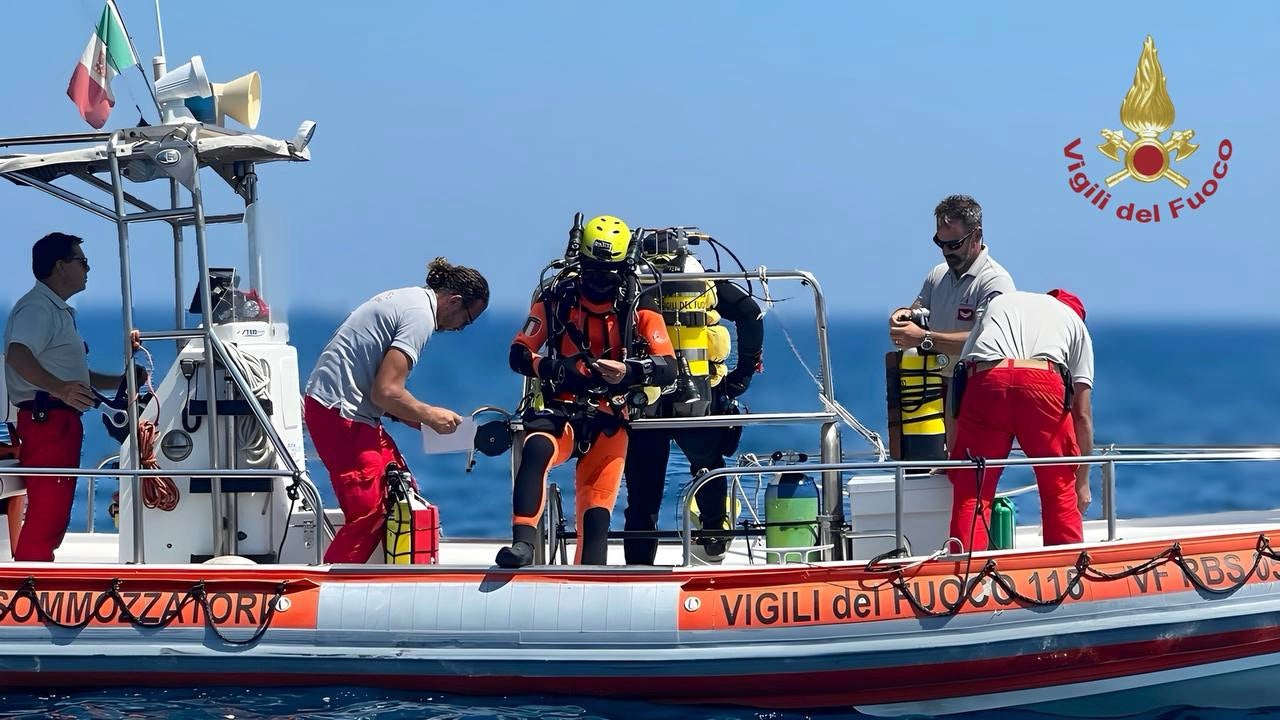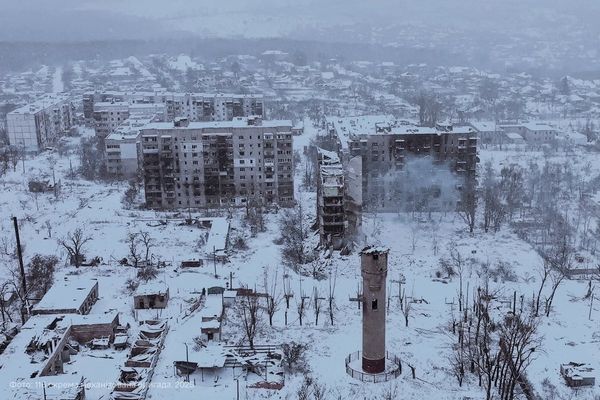A year has passed since a British superyacht sank off the coast of Sicily in 16 minutes, killing seven people including tech entrepreneur Mike Lynch and his 18-year-old daughter Hannah.
The 56-metre (184ft) Bayesian sank off the coast of the Italian island on 19 August, 2024.
The boat’s manufacturers, Italian prosecutors, British marine investigators and survivors have all made different claims about why the boat sank so suddenly.
The boat’s captain and two crew members are currently under investigation for manslaughter.
The Independent looks at everything we know about the incident and how the boat may have sank.

What do we know about the incident?
The Bayesian sank off the coast of the Sicilian capital of Palermo in Italy in the early hours of 19 August last year, after it was hit by unexpected extreme weather. It took just 16 minutes to sink.
There were 22 people on board and seven were killed, including Mr Lynch and his teenage daughter Hannah.
A coastguard official in Palermo said at the time that bad weather had been expected but not of the magnitude witnessed. Winds of up to 90mph were recorded on the day.
Subsequent investigations have identified that the boat was hit by a mesocyclone, which is a type of powerful rotating thunderstorm that can produce tornadoes or extreme wind bursts.
Inquest proceedings in the UK are looking at the deaths of Mr Lynch and his daughter, as well as Morgan Stanley International bank chairman Jonathan Bloomer, 70, and his wife, Judy Bloomer, 71, who were all British nationals.

Why did the Bayesian sink?
Sicilian prosecutors opened an inquiry into suspected manslaughter and have placed the captain James Cutfield, from New Zealand, and two British crew members, Tim Parker Eaton and Matthew Griffiths, under investigation.
Experts have claimed that hatches and doors were left open overnight by the crew, causing the boat to sink.
An interim report released by Italian coastguards sought to blame Mr Cutfield and the crew for the sinking.
A spokesperson for the family of Recaldo Thomas, a cook on the yacht who also died, accused the crew of making “questionable decisions” when the wife of Mr Lynch, Angela Bacares, was up on the deck.
But in a statement released ahead of the first anniversary of the disaster, Ms Bacares said she had always felt “reassured” by the crew during bad weather.
An interim report by the UK’s Marine Accident Investigation Branch (MAIB) also found that the vessel's design, particularly its raised centreboard and high mast, could also be responsible for the tragedy.

The MAIB report suggested the structure may have compromised the boat’s stability in “motoring mode,” vulnerabilities that were not included in the yacht’s stability manual.
The report challenged claims made by yacht builder The Italian Sea Group, which found that the Bayesian would capsize at a 70.6-degree heel, contrary to the builder’s assertion it could recover from 73 degrees.
While TISG said 80-knot winds would tilt the yacht only 28 degrees, investigators found that winds exceeding 63 knots were enough to knock it over.
Giovanni Costantino, the Chief of TISG, has described the yacht as “unsinkable” and claimed the crew must have left doors or hatches open, allowing water in.

How investigators rescued the boat
The Bayesian was recovered as part of a multimillion pound rescue operation which saw about 70 specialist personnel mobilised to Porticello from across Europe.
The recovery mission concluded after the 56-metre (184ft) hull and 72-metre (236ft) mast, as well as deck furniture and other loose items, had been delivered to Italian authorities in Termini Imerese in Palermo, Sicily.
The hull was recovered on 21 June and transported around 12 miles to Termini Imerese the next day by one of the most powerful floating sea cranes in Europe.

On 23 June it was then lifted into heavy steel supports on the quayside, which had tarpaulin underneath to prevent pollution.
The cradle was custom-designed to fit the shape of the hull and built in the Netherlands. The mast had been detached from the hull for the recovery and was on the seabed.
It was salvaged using inflatable lifting balloons and delivered to port on 25 June, along with the loose items that may have moved away from the vessel during past 10 months. Remote-controlled submersible equipment was used to locate the debris in the vicinity of the Bayesian site.

The vessel was originally expected to be raised in May but efforts were stifled first by difficult weather conditions and later by the death of a Dutch diver helping with the rescue mission.
The Bayesian’s insurer, British Marine, tasked the London-based marine consultancy group TMC Marine with raising the yacht.
Investigators in the UK and Italy said raising the vessel was crucial to fully understanding what happened.
What is the coalition of the willing?
Mike Lynch’s widow reveals final moments of Bayesian yacht disaster a year on
The large glacier now too unstable for scientists to visit
Qatar urges the urgency of a Gaza ceasefire after 'positive response' from Hamas
Trump-Zelensky meeting live: US president presses Putin to meet Ukrainian leader
More than 40,000 sign petition to block Bayeux Tapestry’s loan to Britain







